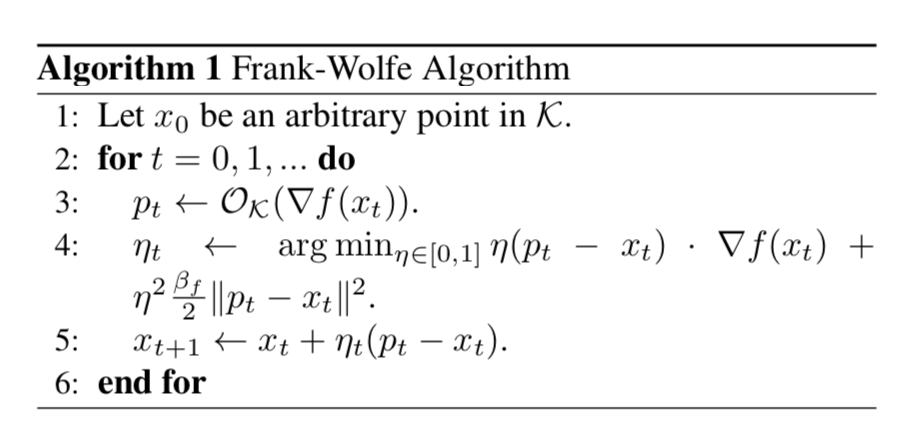Faster Rates for the Frank-Wolfe Method over Strongly-Convex Sets
1. Summary
This paper consider the special case of optimization over strongly convex sets, for which the authors prove a convergence rate of for Frank-Wolfe method. They also show that various balls induced by norms, Schatten norms and group norms are strongly convex on one hand and on the other hand, linear optimization over these sets is straightforward and admits a closed-form solution.
2. Frank-Wolfe method
The Frank-Wolfe method, originally introduced by Frank and Wolfe in the 1950's, is a first order method for the minimization of a smooth convex function over a convex set. Compared to projection method, which is also a first order method on convex set, Frank-Wolfe method is projection free. Its main advantage in large-scale problems is that this projection-free characteristic makes computation efficient. First order and projection-free features enabled the derivation of algorithms that are practical on one hand and come with provable convergence rates on the other.

Above is the general Frank-Wolfe method, where is the convex feasible set and returns a point such that . Step 4 does the exact line search for Frank-Wolfe method. In fact, the RHS is a upper bound for the exact line search object and is a easy-to-solve quadratic form.
3. Previous result
Theorem. If is a -smooth function, let and denote (the diameter of the set with respect to ). For every , the iterate of the above Algorithm satisfies
4. New result
Theorem. If is a -smooth and -strongly convex function with respect to , and the feasible set is -strongly convex with respect to . Let , let and denote (the diameter of the set with respect to ). For every , the iterate of the above Algorithm satisfies